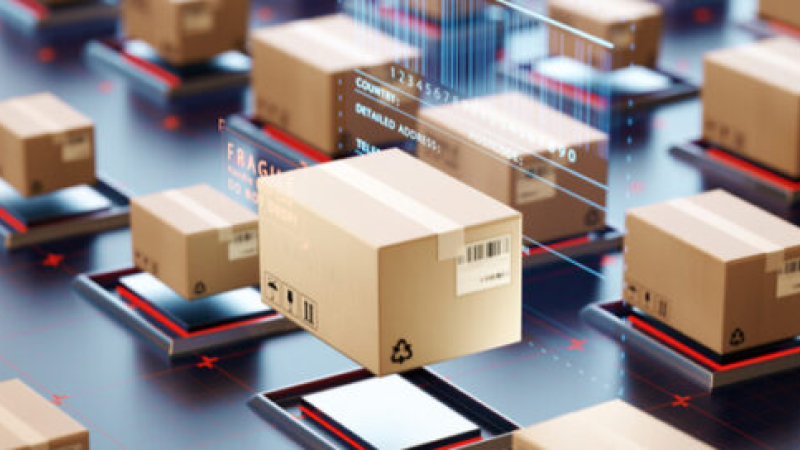What about Logistics App? Innovations are good where there are problematic places in business. They drive progress and open up opportunities for startups. However, they require a serious attitude and hard work, in fact, deal with the problem, which could not be handled for a long time. In our case, innovations are the optimization of some processes inextricably linked with the automation of work. The time has come when the number of tasks that fall on the shoulders of workers is rapidly increasing, while the resources for their implementation remain at the same level. This situation forces us to look for new ways of solving problems that are less expensive in terms of effort, time, and bring more profit.
So, how can a young startup find such a problem zone? We bring your attention to the “markers” indicating a possible presence of a growth zone in a business:
- Lots of routines, non-profitable tasks;
- All the types of inexpensive costs;
- The slowdown in the process performance due to certain factors;
- Excessive influence of intermediaries;
- Constant outages.
Let’s see together how these characteristics are manifested in the wild and how they can be eliminated.
Logistics market: Facts and statistics
Valued at $8.1tn, the global logistics market looks pretty promising. If you want to send a package to your friend who lives in a different city, it has to be transported. If a retail store wants people to buy from it, it has to rely on some type of a delivery outlet. This means the demand for tracking services is hardly going to decrease over time. Still, the industry has its challenges—just as any other. Let’s dive into the facts a bit more.
Statistics
According to Statista, the top logistics companies with valuation up to $15.5 billion are located in Denmark, U.S., and Japan. But what about predictions? Is it safe to continue investing in logistics businesses in the future?
If you go to Bloomberg and type DSV stock price, you’ll see this Danish company has demonstrated crazy stock growth over the last five years—from 178 to 624 DKK. So the answer is yes, investments will, most likely, continue flowing in.
You can also expect the number of shipped packages grow considerably in the next year. This is due to the fact that the volume of parcel shipping grew by 11% in 2018 compared to 2016.
The largest markets in the industry of logistics, which you should consider for targeting, are China—worth around $50 billion and U.S.—over $13 billion.
Trends of the trucking industry in 2019
If you want to develop and market a logistics app in 2019, there are a few more trends you should take into consideration:
- The value of the logistics industry is going to grow by 100% in 2023—from the current $8.1tn to $15.5tn. So plan for a huge increase when developing your logistics-related product.
- There’s a number of problematic issues related to trucking which your product might possibly solve. These are a shortage of truck drivers worldwide, infrastructure design and reliability as well as safety concerns.
- India has a very young but promising logistics market—although very much dependent on Asia’s transportation, it’s growing on the domestic scene and can be a good bet in terms of a target market.
App for cargo shipping and logistics
In this article, we will dwell in detail on the logistics and opportunities that it opens for startups.
What is the problem in this area? As you know, the delivery of goods is carried out in one direction, which means that the transport that carries the goods have to return to the warehouse in some way. Here is a problem: the return road is paid by the driver, and the transport goes empty. Now we can see here inexpediency, shutdown, and deceleration of the basic activity. The transit of the transport is not profitable, so it’s time to think about how to make a logistics app to modernize the work of transport companies in such a way as to minimize losses and maximize profits.
How to find a cargo for a truck so as not to go empty?
- Contact all possible shippers (although it is not really feasible, very time-consuming, expensive, and ineffective).
- Contact intermediaries (brokers), specialized companies that have shippers base (however, pay attention that they take quite high commissions).
As we can see, both options are not efficient and cost-effective enough. But if these options are not suitable, what do we still need? The answer is a solution that directly allows you to communicate with shippers appropriate for your exact delivery case right away and agree on all the delivery details as soon as possible.

Features for logistics app development
Obviously, the app for cargo shipping should consist of two different solutions: for truckers and for shippers. The division of the roles is explained by the difference in goals and needs of these two different users types, and thus one should build two app versions.
In the case with truckers, their goal is to keep the trucks filled while relocating the transport. For this, they might need to find a shipper nearby who will supply them with a cargo.
To reach their goals such features should be implemented:
- The driver’s profile (contact information, types of trucks, preferences);
- Automatic location finder (to search for a shipper nearby);
- List of shippers and their freight orders (to choose from);
- Chat with shippers and real instant notifications (for requests);
- Payment verification services, integration with different payment systems;
- Sending attachments such as legal documents (to prove the delivery is made).
As we already see, such applications are very useful not only for truckers but also for cargo providers. This application gives them the opportunity to save money on transportation because truckers, in any case, need cargo to relocate transport or otherwise they will lose money. Also, even in the case of a normal traffic, with trucking business apps suppliers do not have to pay for the return journey, during which trucks are empty. Therefore, our solution is beneficial for everyone.
Most of the functions that you need to have in an application for a shipper are similar. However, it is important to remember that the supplier has other purposes than the driver: they need to safely transport the goods at a lower cost. In this regard, it will require additional functionality to ensure confidence in the safety of cargo, as well as regulation of payment for transportation and establishing the fact that the goods were delivered. A sample list of vendor application functions can be found below:
- Ability to place a shipping request;
- List of empty trucks available for load;
- Tracking the movement of a cargo on the road using geolocation;
- Send/receive photos or documents for load/delivery verification;
- Chat with drivers and push notifications;
- The driver’s rankings and reviews;
- Legally protected payment and delivery.
So, the shipper’s app requires more security issues to be covered, but still, the freight app development is worth all the efforts required, and now you’ll see why.

More opportunities of Uber for trucks logistics
According to analysts, the entire market for the delivery of goods is divided into several groups (trucking, flying, shiping, etc.), where the cargo delivery by trucks is more than 80% and brings $726 billion revenue annually (infographics). An Uber for trucks will significantly reduce the payment for the delivery of goods, and sometimes the savings will reach 50%, so it is clear that the prospects for such an application are enormous. It is easy to understand, how much revenue such an app can bring.
What to consider during a logistics app development?
1. Monetization.
How will you earn on the application? In spite of the fact that the transportation market brings big incomes, you should develop an effective monetization policy. Here you need to observe the balance of price and quality, the interests of users and your own. And do not forget about the brokers, which at the moment remain leading in the field of backward transportation. To avoid conflicts of interest, you need to think of such a solution, so that everyone benefits from it.
2. Marketing.
How to assemble the base of carriers and suppliers? To create such a startup one should consider that it requires a ready-made user database. It can be not a final one but the user must somehow start using the application, and when there are no users it becomes useless. The solution can be pre-advertisement and promotion of the project, registration of users interested in such an application, as well as encouraging them sharing bonuses or privileges. It is important not to leave such an application in secret until it is launched, but actively test it, offer it to the world.
3. Accessibility.
How to make it more accessible? For now, almost everyone has a smartphone, but do not forget that the mobile application should be made for different platforms, such as both iOS and Android. You will attract more customers, increase the popularity of the product, and increase profits in this way.
Types of mobile app solutions in logistics industry
Sure enough, those working in the industry of logistics rely on mobile for many different purposes. From drivers to carriers to forwarders, it’s that case when every party is involved in a communication chain which is extremely complicated to support without a digital solution.
Here are the most common types of apps for trucking you might benefit from development of apps for logistics:
- Trucks availability: The core functionality of such apps would be an easy-to-use board where you can check the availability of trucks as well as book them for specific dates. Filtering and geolocation features will be a part of the toolkit here. Following the Airbnb model, you can also enable posting loads.
- Tracking routes. A useful asset for drivers, such apps can help avoid traffic jams and select the most optimal route in real time. Location tracking and navigation are core here.
- Safety-related tools. Logistics is also pretty much about a safe shipping experience. There are mobile apps that help truck drivers stay focused on the road while blocking notifications and incoming calls. So distraction-killing tools is another option to go with.
These examples are a good place to start, but in the industry as vibrant as logistics, you can also go with innovation. Whether you follow the Uber example or walk a different path, explore the basis of logistics app development first.
Trucking business apps we already know
Cargomatic
Each Uber for trucking has to have a unique offer to its customers. Being a classic app matching all the features and characteristics mentioned above, it provides something very simple but necessary for the customer’s nerves: fair payment system. Its outstanding transparency in calculating expenses is based on a cargo weight and a precise distance tracking. That makes it very favorable for both shippers and drivers. However, the high commission (20%) makes it not so attractive, though.
Keychain Logistics
This application is an example of a trade-off between brokers and stand-alone suppliers. It is also noteworthy by the calculation of the delivery cost, which takes into account a variety of indicators, such as the price of fuel, route, etc.
uShip
This application works on the principle of a site for hiring. It works for any type of cargo, including consumer goods. The bet is made for universality: deliver anything and anywhere. It also allows you to place an order for transportation and wait until someone will help to transport it.
How much does it cost to create an app for logistics?
Logistics mobile app development is as broad as you can imagine, with tons of possible solutions and functionality packages covered. This means that coming up with a standard pricing formula is a mission impossible. However, if you know the type of your mobile solution and the approximate number of hours to be spent on development, you can calculate the cost of developing a logistics app.
Here’s how you do it:
- Compare app development prices across countries and choose where you want to outsource your Uber for trucking. For instance, the average programmer rate in the U.S. is $150 and in Ukraine $40 per hour.
- Consult a professional outsource provider as to the team you need to recruit for the project. Ideally, you need a list of specialists with specific proficiency levels to understand how much you’ll spend.
- Include all the extra fees like outsource company rates, maintenance services, or legal agreements.
- Come up with the pricing formula: (number of developers + UX designers + PMs + QAs) x number of hours + extra fees.
The most basic version of an app for truck bookings—like Uber—will cost you from $10,000 to $30,000 depending on your outsource destination. To develop a logistics app in Ukraine, you can either hire programmers on a freelance basis or cooperate with a dedicated team recruited by an outsource provider.
Summary: Is an Uber for trucking necessary?
Our answer is unequivocal: yes. Of course, each of us uses the services of transportation companies, often even indirectly. We buy goods that require delivery, and it is included in their cost. We ourselves often need to forward the goods. And if the delivery is so closely intertwined in our life, everyone, especially the application developers, benefits from its optimization, as they are given access to unlimited opportunities of the transportation market.
Content
- 1 Logistics market: Facts and statistics
- 2 App for cargo shipping and logistics
- 3 Features for logistics app development
- 4 More opportunities of Uber for trucks logistics
- 5 Types of mobile app solutions in logistics industry
- 6 Trucking business apps we already know
- 7 How much does it cost to create an app for logistics?
- 8 Summary: Is an Uber for trucking necessary?
